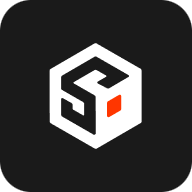# | Coin | Price | 24H Change | 24H Volume | MarketCap | FDV | 1M ROI | 1Y ROI | YTD |
|---|

Sector Mover

Spotlight
Spotlight
Sector Mover
Distribution of ups/downs
What is GameFi?
GameFi, a portmanteau of "game" and "finance," refers to the convergence of blockchain-based gaming and decentralized financial mechanisms. It encompasses games that incorporate blockchain technology, enabling players to earn real-world financial rewards through gameplay. This is often achieved through the use of cryptocurrencies and NFTs (Non-Fungible Tokens), where players can earn, buy, sell, and trade digital assets within the game. GameFi projects often operate under the "play-to-earn" model, where players are rewarded with digital assets for their time spent in the game, their achievements, or their contributions to the game ecosystem.
Why is GameFi important?
• Financial Inclusion: It offers players, especially those in low-income regions, an opportunity to earn income by participating in virtual economies.
• Ownership and Control: Players have true ownership of their in-game assets, thanks to blockchain technology. This contrasts with traditional online games, where items are typically locked within the game.
• Innovative Gaming Models: GameFi introduces new gaming models that blend entertainment with financial incentives, leading to novel gameplay and economic systems.
• Decentralization: Many GameFi projects are built on decentralized networks, reducing reliance on centralized authorities and giving players more say in the game's development and governance.
• Community Building: GameFi projects often foster strong, engaged communities around their games, with players contributing to the game's evolution and ecosystem.
What are the currently well-known head GameFi projects?
• Axie Infinity: A blockchain-based game that allows players to breed, raise, and battle creatures known as Axies. It's one of the pioneers of the play-to-earn model.
• Decentraland: A decentralized virtual world where players can buy, sell, and build on virtual land parcels. It blends elements of gaming, social media, and decentralized finance.
• The Sandbox: A community-driven platform where users can create, own, and monetize their gaming experiences using NFTs and the platform's native cryptocurrency, SAND.
• Illuvium: An open-world RPG adventure game built on the Ethereum blockchain, offering a decentralized ecosystem where players can capture and trade creatures called Illuvials.
What are the important indicators for evaluating GameFi?
When evaluating GameFi projects, consider the following indicators:
• Player Base and Growth: The size and growth rate of a game's active player base can indicate its popularity and long-term potential.
• Economic Sustainability: The design of the game's economy is crucial. A well-balanced economy that prevents inflation and ensures rewards retain value is key for long-term success.
• Gameplay Quality: The overall quality of the gaming experience, including graphics, story, and gameplay mechanics, can affect player retention and attract new users.
• Tokenomics: The structure and utility of the game's tokens (including NFTs) play a crucial role. Factors like use cases within the game, distribution mechanisms, and token supply can impact the game's economy.
• Community and Developer Engagement: A strong, active community and responsive developers indicate a healthy ecosystem. Engagement can be measured through social media, updates, and community participation in governance.
• Partnerships and Ecosystem Integration: Collaborations with other blockchain projects, gaming companies, and networks can enhance a GameFi project's features, utility, and user base.


